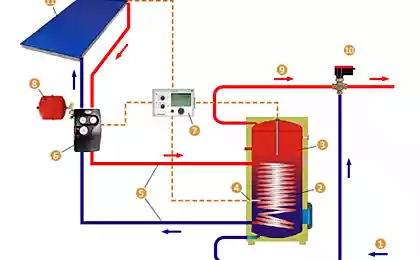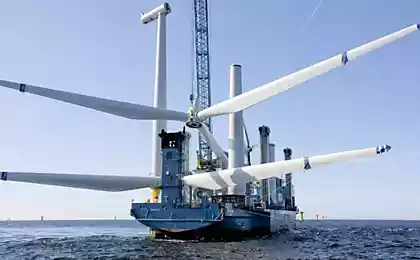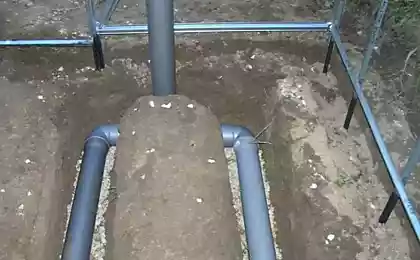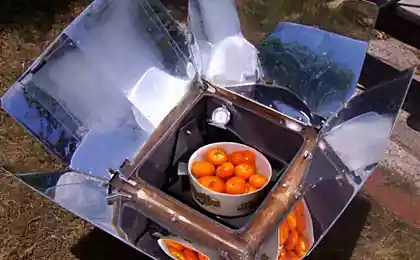536
Scientists have made front Windows in the Sunny climate system
Imagine a building, the facade of which is capable of carrying the functions of system of heating and air conditioning, as well as to perform the role of insulation and control of light intensity. At the University of Liechtenstein, the project team Fluidglass now working on implementing just such a project.
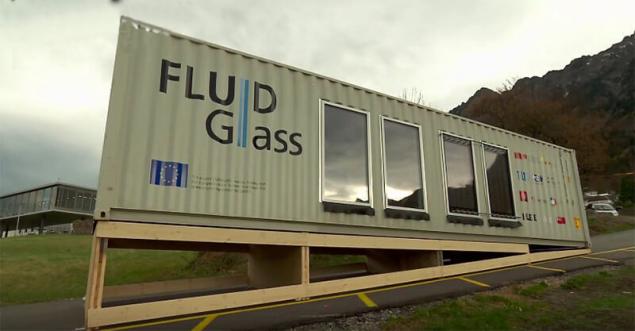
Innovative concept Fluidglass is a multifunctional solar thermal system based on glass facades. The technology is designed for turning passive glass façades into active transparent solar collectors that simultaneously are able to control the flow of energy passing through the outer structure of the building.
To test its technology, scientists have built a container, which contain a special liquid. It circulates inside the glass, and if necessary it can be painted. Thus, the Windows are transformed into active devices for energy storage. And not only.
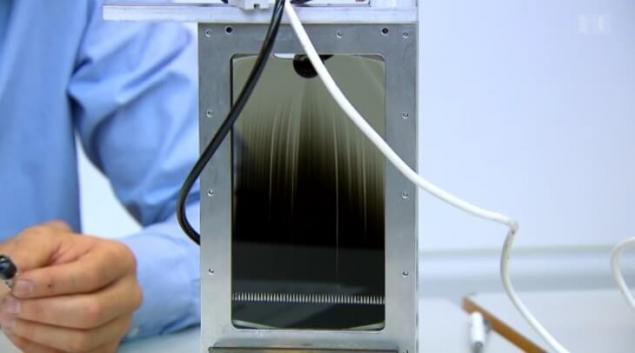
"Glass can be tinted, then Windows will protect from sunlight. They can also heat or cool the room. And they can turn into solar panels. The glass collects solar radiation and uses it for energy consumption inside the building," says arhitecon Anne-Sophie Zapf, project coordinator Fluidglass.
According to the developers, in ideal conditions, every container is able to generate up to one kilowatt of energy per hour. The liquid inside the glass is a mixture of water, antifreeze and magnetic particles. Scientists say that their main purpose was securing long-term stability of this mechanism, so they tried to find particles with very precise characteristics.
"The particles should not stick together, that is not needs to stick together. They also don't have time to settle on the glass surface. You need to keep it in a liquid. And if necessary, we should be able to easily filter them," says Daniel Hstel, mechanical engineer NTB.
They also had to ensure that the liquid can be placed inside the glass safe, simple and effective way.
"It was very difficult to find the correct mode of operation. Glass should not be under pressure, as in this case, over time, it deforms and then we did not have a uniform distribution of magnetic particles. That is, we had to start the mechanism in action under very low pressure. Therefore, the whole system goes against overpressure is too low. And then there are other problems that we also had to be addressed," adds Hstel.

These Windows are arranged in such a way that the external side is able to accumulate solar radiation and transform it into energy, and internal – can cool or heat the container from the inside.
To determine under what conditions and to what extent the window is able to better regulate interior temperature, it took sophisticated computer models.
"We confirmed that with this technology there is no need in additional heating or cooling, for example, in the air conditioner or the radiator. This important thing we identified with the help of computers. And now we have to confirm this in real trials in the container," says Laura Baumgartner, engineer at civil engineering of the University of Liechtenstein.
Tests in real conditions in Vaduz in winter and summer in Cyprus, will show whether these Windows are able to effectively heating and cooling the interior of the container. The authors of the project believe that these boxes will be primarily used in multi-story office buildings, where a significant part of the facade is covered with glass. But first they have to solve the problem with the loads created by the wind on large altitude areas.
It should be noted that Fluidglass to a lesser extent focused on the individual at home, because they have a smaller glass surface. But for tangible benefits, the system requires a maximally large area of Windows.
According to the researchers, these energy efficient Windows can be on the market in 4 years. published
Source: ecotechnica.com.ua/energy/solntse/1761-uchenye-prevratili-fasadnye-okna-v-solnechnye-klimat-sistemy.html

Innovative concept Fluidglass is a multifunctional solar thermal system based on glass facades. The technology is designed for turning passive glass façades into active transparent solar collectors that simultaneously are able to control the flow of energy passing through the outer structure of the building.
To test its technology, scientists have built a container, which contain a special liquid. It circulates inside the glass, and if necessary it can be painted. Thus, the Windows are transformed into active devices for energy storage. And not only.

"Glass can be tinted, then Windows will protect from sunlight. They can also heat or cool the room. And they can turn into solar panels. The glass collects solar radiation and uses it for energy consumption inside the building," says arhitecon Anne-Sophie Zapf, project coordinator Fluidglass.
According to the developers, in ideal conditions, every container is able to generate up to one kilowatt of energy per hour. The liquid inside the glass is a mixture of water, antifreeze and magnetic particles. Scientists say that their main purpose was securing long-term stability of this mechanism, so they tried to find particles with very precise characteristics.
"The particles should not stick together, that is not needs to stick together. They also don't have time to settle on the glass surface. You need to keep it in a liquid. And if necessary, we should be able to easily filter them," says Daniel Hstel, mechanical engineer NTB.
They also had to ensure that the liquid can be placed inside the glass safe, simple and effective way.
"It was very difficult to find the correct mode of operation. Glass should not be under pressure, as in this case, over time, it deforms and then we did not have a uniform distribution of magnetic particles. That is, we had to start the mechanism in action under very low pressure. Therefore, the whole system goes against overpressure is too low. And then there are other problems that we also had to be addressed," adds Hstel.

These Windows are arranged in such a way that the external side is able to accumulate solar radiation and transform it into energy, and internal – can cool or heat the container from the inside.
To determine under what conditions and to what extent the window is able to better regulate interior temperature, it took sophisticated computer models.
"We confirmed that with this technology there is no need in additional heating or cooling, for example, in the air conditioner or the radiator. This important thing we identified with the help of computers. And now we have to confirm this in real trials in the container," says Laura Baumgartner, engineer at civil engineering of the University of Liechtenstein.
Tests in real conditions in Vaduz in winter and summer in Cyprus, will show whether these Windows are able to effectively heating and cooling the interior of the container. The authors of the project believe that these boxes will be primarily used in multi-story office buildings, where a significant part of the facade is covered with glass. But first they have to solve the problem with the loads created by the wind on large altitude areas.
It should be noted that Fluidglass to a lesser extent focused on the individual at home, because they have a smaller glass surface. But for tangible benefits, the system requires a maximally large area of Windows.
According to the researchers, these energy efficient Windows can be on the market in 4 years. published
Source: ecotechnica.com.ua/energy/solntse/1761-uchenye-prevratili-fasadnye-okna-v-solnechnye-klimat-sistemy.html






